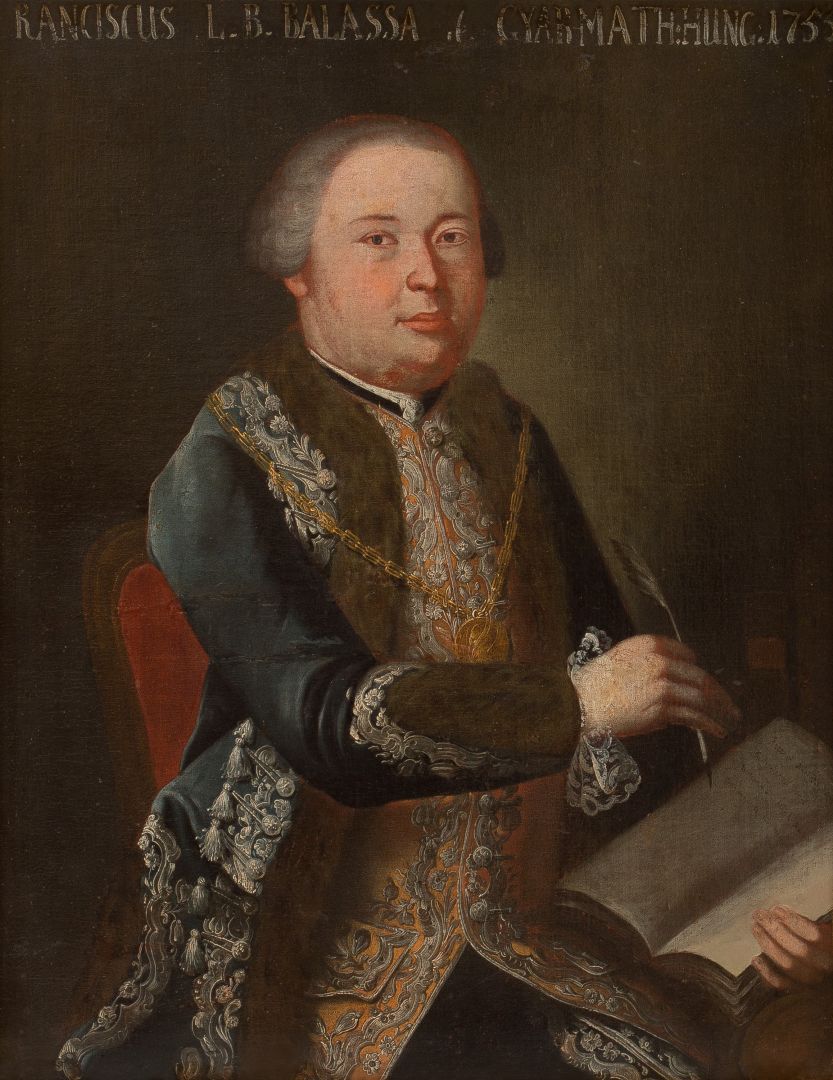Hall 1
Portrait of Ferenc Balassa
Unknown artist
Portrait of Ferenc Balassa, 1755
oil on canvas, 87x70 cm; unmarked; written on top: FRANCISCUS L. B. BALASSA de GYARMATH: HUNG: 1755
Fine Arts Collection, Inv. No.: 53.238.1.
Portrait galleries representing the lineage, rank and social importance of noble families started to gain popularity among members of the Hungarian aristocracy during the middle of the 17th century. The portrait of Count Ferenc Balassa (1736–1807) was also a part of familial series of portraits, which was added to the collection of the museum from the Balassa mansion in Ragály in 1951. Count Balassa himself had a very successful career, having served as the imperial and royal chamberlain, royal councillor and crown guard throughout his life. Furthermore, he also functioned as lord lieutenant and captain general. His ancestors included Bálint Balassa (1554–1594), who is well regarded in the national conscious for his military accomplishments and poetry. His half-length portrait from the family gallery can be found in the Christian Museum of Esztergom.
The painting showcases a shift in the Hungarian views of the period. Previously, even outstanding intellectuals (including Bálint Balassi) were depicted in martial glory, with a weapon at their side. By contrast, this painting emphasizes the intellectual side of the individual, who is wearing a richly adorned, French-style garments while holding a book in one hand and a quill in the other as he looks at the viewer with pride.
The novelty of this portrait is tied to the writing accomplishments of the person depicted. In 1754, one year prior to the creation of the portrait, an article was published in Vienna about Ference Balassa, which detailed how he, as a student of the Collegium Theresianum, was writing about the reign of King Saint Stephen. It was his pride over this scientific accomplishment that made Balassa depict himself in a more scholarly fashion, as if he was in the middle of writing that aforementioned piece.
Even though the painting emphasizes intellectuality over feats of strength, the techniques used still follow centuries-old traditions. The half-length depiction and the plain and stiff presentation were all elements of 17th century tradition. The painter was tasked to depict the social status and outstanding personal accomplishments of the individual in matter of fact manner. Interest in more subjective portrait depictions would only arise later on.
Andrea Pirint
